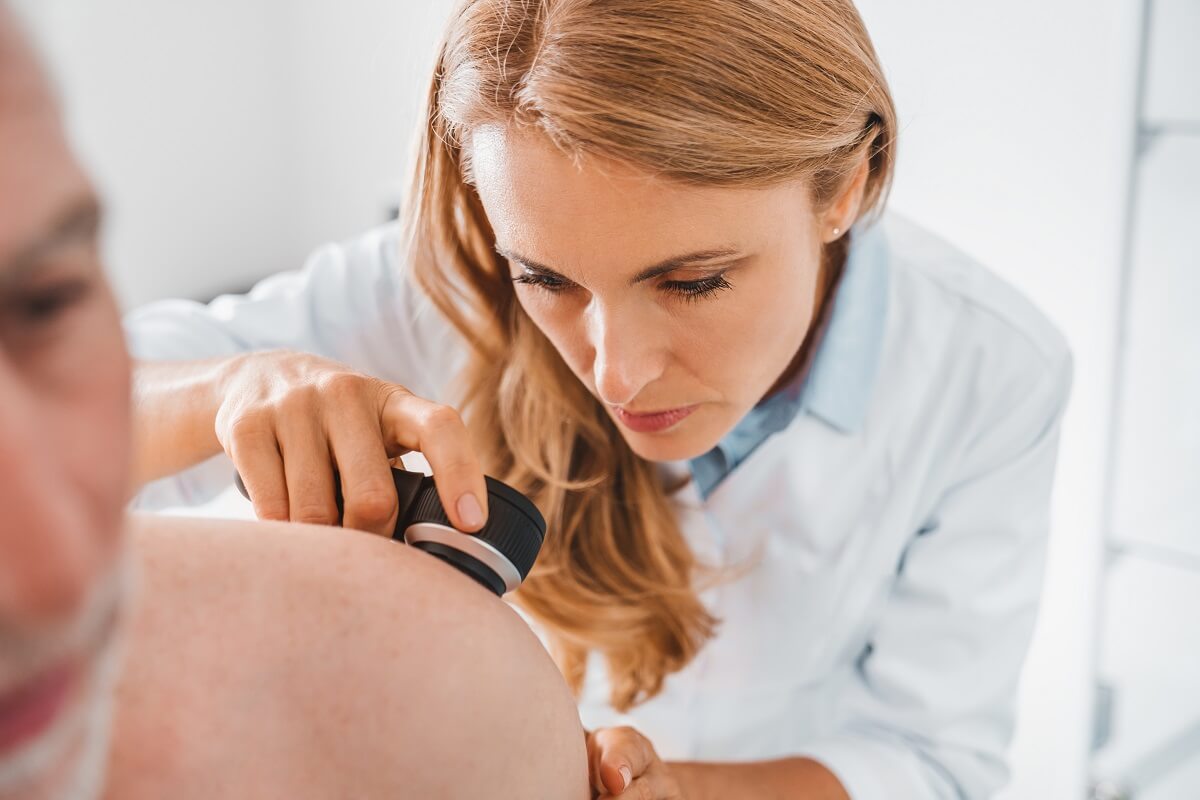Skin Manifestations of Breast Cancer: Cautions for the Dermatology Clinician
Having declined slightly in the early 2000s, the rate of new female breast cancer cases has ticked up each year from 2014 to 2019, according to the CDC. And while the number of breast cancer deaths has been relatively stable for the last 2 decades, the death rate has decreased from 26.6 per 100,000 in 1999 to 19.4 per 100,000 in 2019. With advances in treatment, women diagnosed with breast cancer have better odds of survival—especially if the disease is diagnosed early.
During Breast Cancer Awareness month, Sam Awan, MD, a dermatologist at U.S. Dermatology Partners McKinney in McKinney, TX, reminds dermatology health care professionals that they can play a role in identifying possible breast malignancies that manifest with skin symptoms. “Depending on the type of breast cancer, certain types can present in the skin with signs like redness, swelling of the breast, dimpling/retraction of the nipple, bloody nipple discharge, orange-red discoloration,” he says. “There are also types of breast cancer that can metastasize to the skin, and here it can take different ‘rash-like’ presentations on the skin.”
Dr. Awan shared his insights on what skin symptoms may indicate a malignancy and warrant referral for further testing. He notes that many common, benign rashes can present on the breast. These include nipple eczema, inverse psoriasis, and irritant dermatitis, which he notes is colloquially called “jogger’s nipple.” These conditions, “are far more likely to present to the dermatologist’s office than metastatic breast cancer with cutaneous involvement,” he says. “However, when these rashes present on the breast, a thorough exam and history is required.”
According to Dr. Awan, clues that may point to a more concerning underlying process include lack of response to treatment, lymph node swelling, constitutional symptoms, chronicity, and nipple discharge, bleeding, tenderness, and/or retraction.
“The truth is that while most rashes we encounter on the breast are benign, metastatic breast cancer can take on many different appearances on the skin. These commonly occur on the chest but can appear anywhere on the body. While skin nodules are most common, cutaneous metastases can also take the form of carcinoma erysipeloides, carcinoma telangiectoides, carcinoma en cuirasse, and carcinoma hemorrhagiectoides.”
Dr. Awan differentiates these cutaneous metastases associated with breast cancer:
- Carcinoma erysipeloides: often mimics erysipelas with a well-demarcated, inflammatory appearance
- Carcinoma telangiectoides: presents as an erythematous patch with telangiectasias and vascular papules, often mimicking lymphangioma circumscriptum
- Carcinoma en cuirasse: typically has a morpheaform, bound-down appearance.
Additionally, Dr. Awan says, zosteriform eruptions have been seen in several patients with metastatic disease, as have alopecia areata, milia-en-plaque, cysts, and dermatofibromas. “We also have to consider Paget’s disease in any patient with a unilateral eczematous or peau d’orange presentation,” he adds.
Dermatologists have to have a high index of suspicion in any patient with a history of breast cancer.
A history of breast cancer is a key factor for consideration when assessing breast symptoms, Dr. Awan says. “The key is to pay attention to past medical history and to avoid anchoring bias; always revise and re-evaluate your diagnosis if the response to therapy is suboptimal,” he urges. “Have a low threshold to biopsy in any patient where the appearance seems atypical. For example, in certain cases of alopecia neoplastica mimicking alopecia areata, the dermoscopy often lacked the classic findings seen in areata, and there is often a shiny appearance not classic for areata.”
Patients undergoing systemic treatment for breast cancer may also present to the dermatology clinic for the management of side effects of treatment, which could include hair, skin, and nail symptoms. “The field of supportive oncodermatology is designed to help ameliorate these side effects and support patients through their treatment,” Dr. Awan says. “The key is to grade each presenting patient using CTCAE criteria (Common Terminology Criteria for Adverse Events) at the onset of each presentation. The severity, as classified by CTCAE grade, dictates our entire approach to management.”
A few of the more common dermatologic effects of treatment, according to Dr. Awan are:
-
Toxic erythema of chemotherapy (TEC, aka palmoplantar erythrodysesthesia), which involves painful edema and erythema of the palms and soles; the folds of the skin can also be involved. “Prophylactic urea and avoidance of friction and irritants can be used in advance of therapy. If agreed on by the oncology team, cold gloves/socks purchased online and worn during infusion can significantly decrease the risk of developing acral symptoms,” he says.
-
Taxanes commonly cause TEC of the intertriginous folds, per Dr. Awan. “This is generally managed with topical steroid and occasional dose reduction. Taxanes are also notorious for causing dystrophic nail changes. Management of these changes is typically based around avoidance of trauma and symptom relief, but it is always important to culture to rule out secondary bacterial or fungal infections,” he suggests.
-
Dr. Awan notes that new agents, such as the PI3K inhibitors, can cause a maculopapular rash with peripheral eosinophilia. “These are typically low-grade eruptions managed with topical steroids. In more severe cases, low to moderate dose systemic steroids can be used, although we have to be cautious as PI3K inhibitors can predispose patients to hyperglycemia.”
-
Chemotherapy induced alopecia (CIA) and endocrine therapy-induced alopecia (EIA), which are common in breast cancer survivors, can have a profound impact on quality of life, Dr. Awan advises.” Scalp cooling, especially during taxane therapy, has been associated with decreased severity. These cases can be difficult to treat. While minoxidil and bimatoprost are mainstays of therapy, spironolactone and even platelet rich plasma injections have also been used in these patients, with varying degrees of success. As always, management should be multidisciplinary and involve the patient’s oncologist.”








